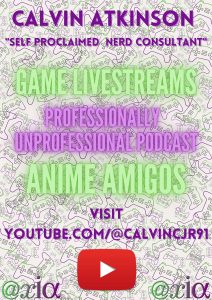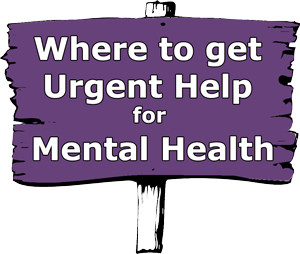Could the whole of our social culture be emotionally and energetically refreshed and replenished by developing a deeper understanding of the value that acceptance of autism has to offer.
What is actually happening inside the brains, hearts and bodies of autistic people when their neural pathways are only reinforced/rewarded/recognised as valuable when they manage to divert sufficiently to meet the demands of our cultural narrative for ‘normal’?
Can we measure the therapeutic benefits of providing a safe, pressure reduced, learning environment that focuses on maximising the use of naturally driven motivators to support the fullest integrative expression of the emotional and energetic range of the autistic person by providing individually led, fully integrative, experiential learning opportunities that strive to align co- creatively with the whole person?
Could we measure signs of reduced anxiety and stress related behaviours and learn more about how stress affects the body by paying particular attention to the nervous system and digestive systems of autistic people.
Do we need to change the measuring stick?
Questions, questions, questions, until we find the right questions!
I was diagnosed with autism four years ago as a forty five year old woman. My moments of clarity began after a second mental health breakdown. One such moment involved a conversation with a therapist who asked this question ‘what stresses you out Sarah’ my well trained, conditioned, acceptable self said ‘nothing’ and then someone else, someone I did not recognise said in disbelief, ‘everything’.
So, my journey into the emotional and energetic realm of my autism began, a realm I had hidden deeply, like a dark secret in a safe place, my body. But, it was no longer safe. It circumnavigated my body and mind like a tsunami of crippling anxiety and depression.
This is what happens when you put something that is not intended to be in a box, in a box, even if you do it ‘nicely’ and put a bow on top.
My personal experience of adjusting to the diagnosis has involved unravelling a whole host of mental health issues. I can see now, that as a child, misunderstood by the world around me, I created a ‘safe’ persona based on the way that my brain had to create a filing system of accurate ‘behaviours’ to navigate my way through the mirrors of the world, mirrors that I never saw myself in. I literally believed I would not survive by relying on my own, unique, internal guidance system. Who I really am, was never valued. I had values but no value.
Autistic people are rarely valued for their energy and emotional range. Let’s be honest, they are rarely valued. They are valued when they figure out how to squeeze their energy and emotional range into boxes that can be measured and managed by systems and processes that do not understand enough about the cost this level of compromise has on the individual.
‘It feels like a wire gets reconnected and something gets repaired’ Temple Grandin, about her squeeze box.
I am often quite intoxicated by the energy and emotional realm of autistic people. I resonate with many people who describe feeling lost in a world that does not understand them, responds fearfully to them and holds itself in separation as a result of that fear, a costly separation.
As a highly sensitive child, overwhelmed by everything, this sense of separation was soothed by my complete addiction to being with horses.
Their non judgemental presence as unconditionally loving witnesses combined with their size, sensory sensitivity and soothing rhythmic energy provided me with the perfect vehicle to process the blocked pathways in my frustrated brain. Repressed energy and emotions could be dispersed holistically from the whole of my brain through the whole of my body.
They gave me safe passage back into my body which soothed my amygdala and naturally healed the parts of my brain that were over stretched and helped me to process and integrate the internal conflict between being me and the levels at which I had to dissociate from myself to fit into the outside world.
They were my rescue remedy. The bridge they provided carried me back to myself, back into my body, back into alignment with my sensory and emotional realm. This process grounded me in my body, helped me to maintain a connection to my internal guidance system which is informed by my emotional and sensory energy, graced me with a tenuous but life saving link to my true self.
I intuitively sensed that my life depended on them. The parts of me that remain are the parts of me that they sustained. As a special interest and focus of my very best attention, they engaged every fibre of my being. I do not think I would have recovered from my self- defeating behaviours without some familiarity with this safe, internal guidance system.
Without this I would have become a lost prisoner of medication and the mental health system. Crippled by blocked emotions, blocked energy and stuck inside the boxes of my autistic brain, held prisoner by the post conquest mindset and good intentions of those around me.
This suggests to me that there is an intelligence at work inside autistic people that gets missed. Imagine if we could find ways to support people to connect to and integrate this intelligence co creatively and holistically. I believe the sensory realm of autistic people deserves to be valued.
As an autistic child, when I looked in the mirror of our social culture, of my particular family dynamic, of the educational system, I saw no evidence that I would ever be valued. When I sat on a horse and felt the horse absorbing and accepting me without asking for anything in return, I was always re aligned emotionally and energetically. The horses were like a bridge between me and the ‘normal’ world. They helped me to make sense of everything. They returned me to my senses and they asked for nothing in return. They never tried to rationalize or normalize my sensory perception of the world around me, their acceptance was all the reward I needed.
This experience, of being involved, absorbed, by something that made sense to me was so valuable, it made me real, it gave my sensory realm function, purpose and clarity. Everything else was not real, not really.
I appreciate that this is hard for people to understand. It confuses the heck out of me. Writing this is hard, finding the self esteem to attempt to be understood always feels risky, overwhelming and pointless.
Then, I hang out with my buddy, I feel his autistic energy through mine and I hear a similar struggle, I feel the same frustration and I sense the same gradual, tragic, repetitive experience of failure, of trying so hard to understand, of being so willing to listen but never being heard.
I have to witness the loss of that precious, innocent trust that surely one day, someone will see, hear and feel me. The effort to find the ‘right’ facial expression, the all too familiar signs beneath the ‘well trained emotions’ of avoidance, frustration, anxiety, and the gradually decreasing sense of entitlement to the same stuff everyone else has.
I also feel the resilience, the heart opening willingness to try, the power that comes from the faith that many vulnerable people have when their lives depend on the mercy of others. I can feel his heart because I have learned to listen with mine. I am re aligned with the emotionality and energy of autism when I pay attention in this way. When I witness the immense effort, the try, the power of powerlessness, and just like the horses did for me, I hold a safe and loving space.
I am reminded that we are all just energy, either in alignment with our unique internal guidance systems or out of alignment. He hears my hearts prayer and I feel waves of appreciative and empathic energy flowing between us, I hear the sweet songs from his, almost, inaudible sensory world. I hear them because I have been immersed in the energy of autism, I know it is valuable. When this happens, my heart tells my head to shut up and write the damn paper.
Since my diagnosis, I have also had the honour of supporting other women who have been diagnosed late in life. The commonality of the difficulties these women face trying to reframe their emotional lives and untie themselves from their conditioning is teaching me so much. As children, the only way we were able to cope, was to abandon ourselves, to dissociate, sometimes totally, from who we are, as our brilliantly bright brains were dulled by the demands of a world we did not understand.
A world that cannot see, hear and feel us because we are too sensitive, too costly, too weird, too withdrawn, too emotional, too intense, too obsessive, too mysterious, too challenging, too anxious and on and on it goes.
The most common experiences we share are the effects of emotional trauma. Trauma lessons the blood flow through the body. It is incredibly difficult to treat.
The revelations and unique insights these women bring into my life continue as they begin to reframe their lives and share, with such courage, the many ways that they are emotionally disabled by their own reactions to themselves. On a daily basis I am hearing women telling me how their unexpressed autistic emotional energy has remained trapped in their bodies, so much so that they feel overwhelmed and hopeless. These psychological and physiological traps blocking the free flow of energy through the whole brain and body, causing anxiety, illness, depression, addiction and other health issues.
What actually happens to the human energy field of the autistic person when the brain is forced to align with the human energy field of the non autistic person? The dominant energy field wins, and for every winner, there is a loser.
Current trends and behavioural management strategies offer little if any genuinely child led experiential learning opportunities for autistic children to validate their sensory/emotional realm, learn healthy and authentic self regulation techniques (many people are using huge amounts of their ‘autistic’ energy to fit into the reductionist boxes offered by the indoctrinated neurotypical reward systems they are forced to operate within, the way in which an individual is utilizing this energy is often unrecognised or given any validation, there is certainly not enough research yet to offer any conclusive evidence about the potential outcomes of looking more compassionately and respectfully at the many internalized and highly intelligent systems in the brains and bodies of those on the spectrum.
From a young age, people are extremely vulnerable to misinterpretation, if they do manage to twist themselves into a socially acceptable shape for short periods the effect this has on their ability to function in other area’s of their lives is often catastrophic.
A Good Beginning
There is a motive behind my reasons for using unusual language and describing autism as having its own energetic and an emotional realm. I want to find a new way to language a positive dialogue about autism. I need to talk about the extraordinary resilience, integrity, focus, clarity, empathy, ability to forgive and sense of purpose that autistic people have to share.
Many people I meet have never been validated or even recognised for their energetic and emotional realm. It is no wonder then that these force fields of life energy become repressed by opposing energy fields.
I wanted to share some examples of how I see, feel and value the energy and emotionality of autism.
I’m in a car with Ben, a ten year old autistic boy, his brothers and sister. The non autistic kids are fighting, normal stuff. The emotional temperature is increasing. Ben is making sounds that are soothing his internal reaction to the emotional temperature in the car and also creating a wave of energy that vibrates and resonates with the friction around the emotional energy that the other kids are expressing. It calms everyone down. Ben is not valued for doing this.
I’m introduced to William. He is somehow managing to communicate with a rescue greyhound called Meg. Meg and William are intoxicated by each other and connected by an invisible (I can see it) energy field. No one else can communicate with Meg like this. No one in William’s family pays William any attention for this. If anything, they think he is weird.
Alistair manages to cope with mainstream school. It takes him twice as long to organise his things because he has to do it in a certain way or he will definitely have a meltdown. He is terrified of having a meltdown in front of his friends. He cannot cope with the intensity of energy in the school hallway at certain times of the day.
He has to hide the shame he has learned about his emotional needs and instead of leaving most of his books in his locker, he has to carry them to and from school every day. He has learned to survive by prioritising his intellectual abilities over and above his emotional needs.
He has no way of expressing himself, he has to turn all of his energy and emotions inward and try to manage them. He often finds that he has been sitting, staring at a wall for hours on end without realising.
My life experience continues to be a series of these examples.
I would like to explore a range of opportunities that help us to see more clearly the impact on the autistic person of conditioning neural pathways by reward systems that focus on neuro typical value systems.
I would like to explore a ‘buddy system’ of valuing the limbic resonance between autistic kids and adults that does not shy away from the possibility that there is intelligence within the internal guidance systems of people on the spectrum that gets over looked.
I would like to improve the chances of autistic people to live purposeful and meaningful lives.
I will begin exploring these ideas by inviting children and adults on the spectrum to enjoy time together during the summer holidays for picnics and experiential play/learning.
If this is something you are interested in being involved in please do not hesitate to contact me.
Share This Post:







Thank you for this brilliant description and for sharing it with us
I was very moved by what you have written here. As a teacher, I used to be able to connect with the autistic chilren I came across in a way that seemed to alienate me from my colleagues. Never did it occur to me until I read my grandson’s report from Linda, that I was autistic myself. I now have a diagnosis (age 67). It has been such a relief and a revelation. I now have access to the books on the subject, knowing why I can understand it from the inside. My own daughter, who has never been diagnosed (age 33), has the same connection with horses that you describe, yourself.
Beautifully written and very hopeful.
Kind regards
I totally resonate with this, even though I’m not diagnosed with autism.
Hello, I have been married to my autistic husband for 12 years and I know we are energetically different and all the trauma built up from him being misunderstood – and me not having the patience to meet him where he’s at – has been tough. But it has put me on a path to understand more deeply about energy and how we can be in harmony with each other. It’s especially important as we have a son and that adds another level of complexity. So thank you for your writing, it reaffirms what I’ve been learning and keen to know more! thank you.